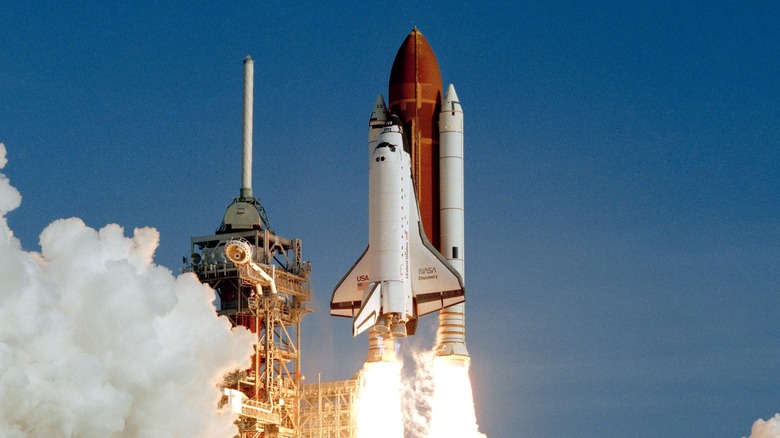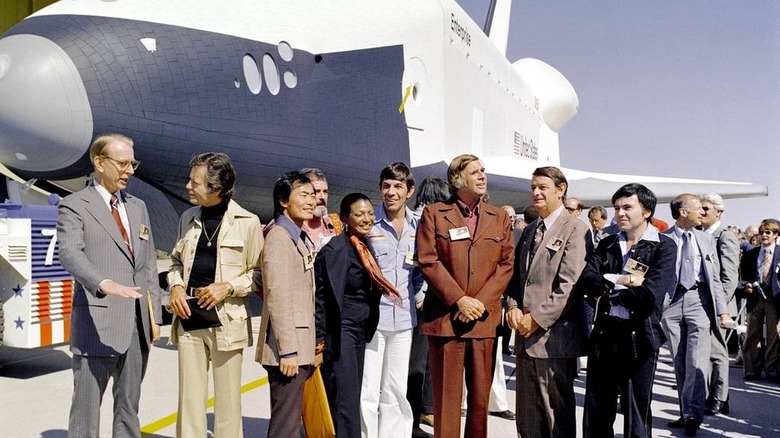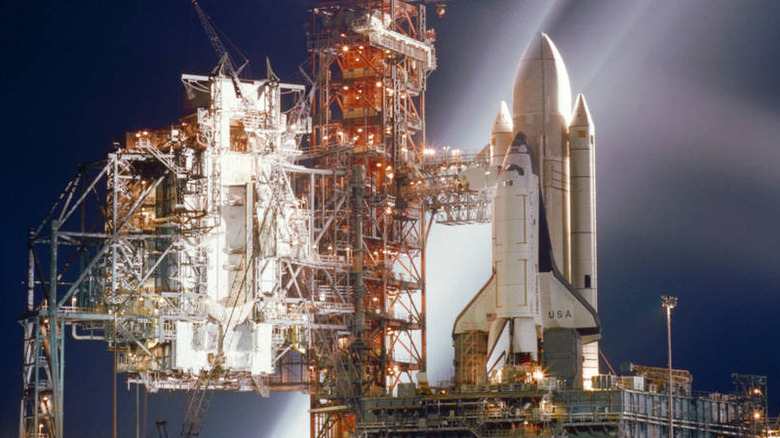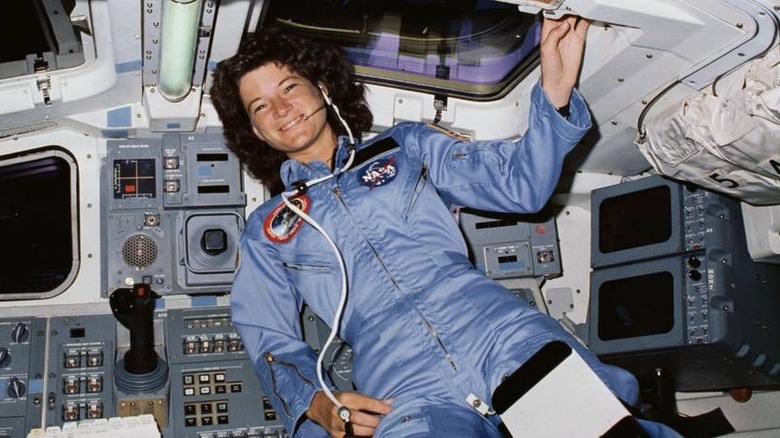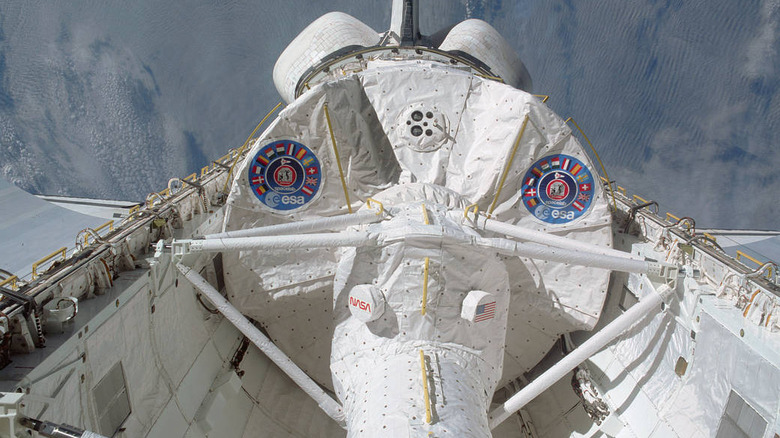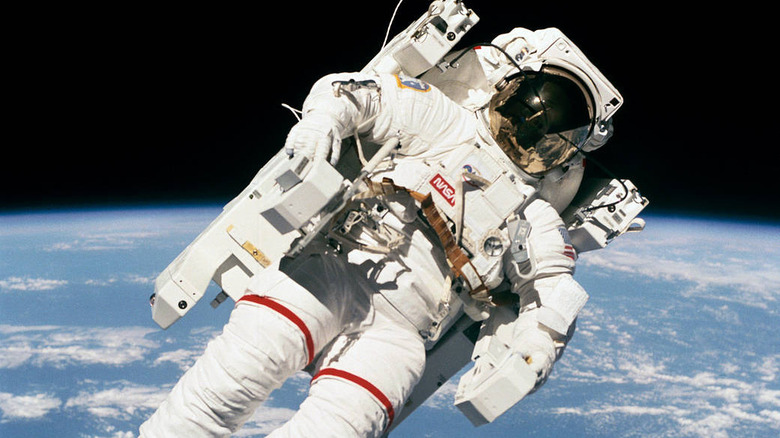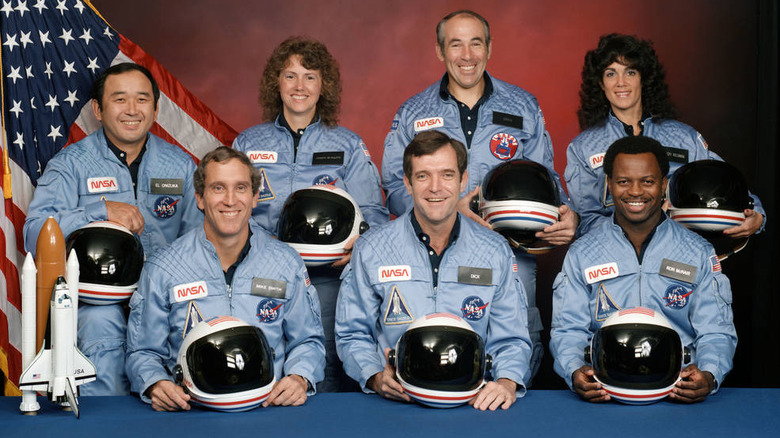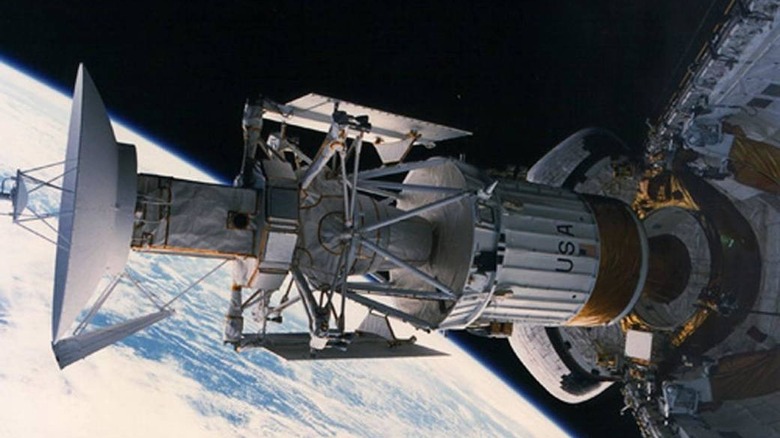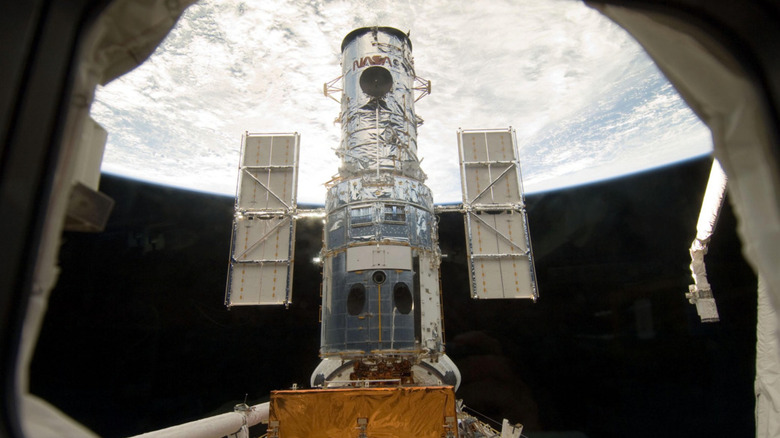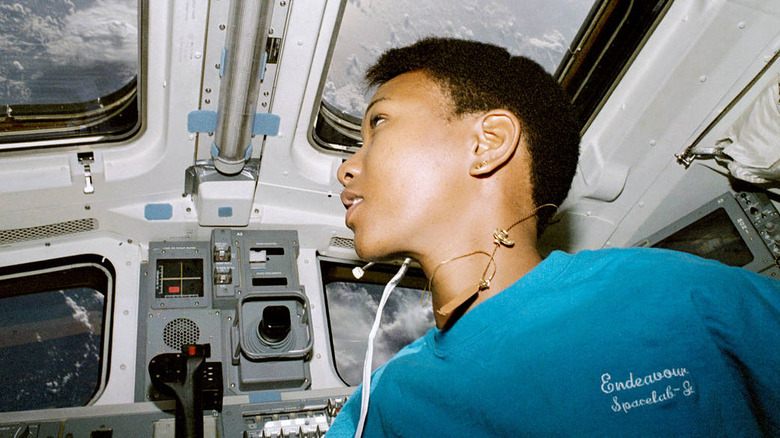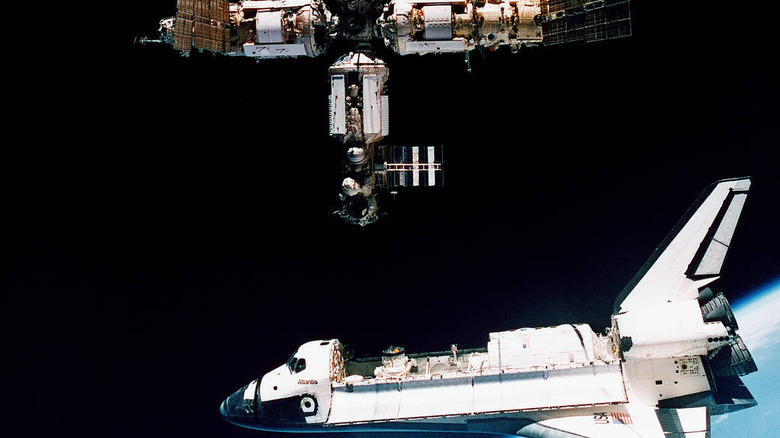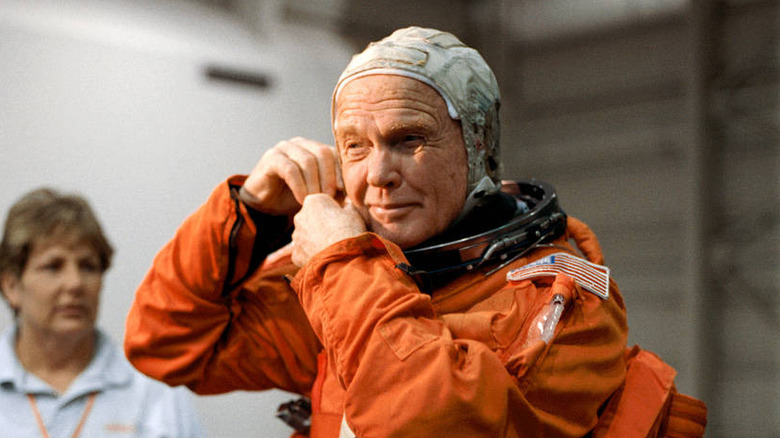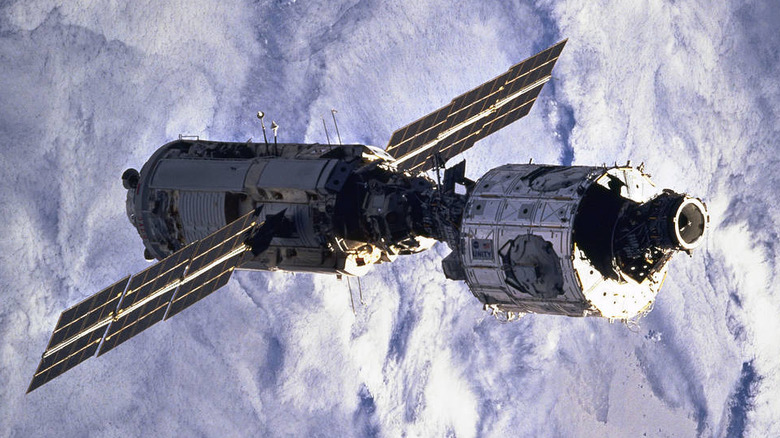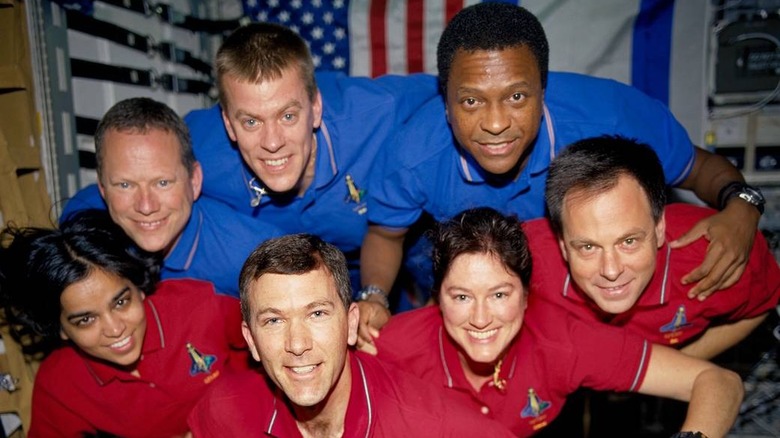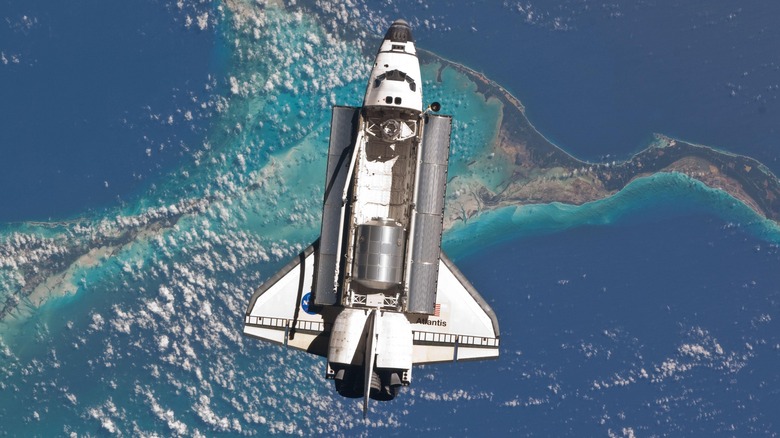The Most Memorable Space Shuttle Missions Ever
NASA's space shuttle program, officially dubbed the Space Transportation System (STS), built upon the legacy of the Mercury, Gemini, and Apollo programs with a goal of developing the first reusable spacecraft capable of ferrying astronauts into orbit and returning to Earth, according to NASA.
Five space-worthy shuttles were constructed and together they completed a total of 135 missions to low Earth orbit between 1981 and 2011, according to NASA archives. In that time, the archives note that the shuttle program was responsible for carrying out scientific experiments in microgravity, deploying and retrieving satellites, launching the Hubble Space Telescope, and helping to construct the International Space Station.
Each of the shuttle's missions were the result of countless scientists, engineers, and explorers pushing the boundaries of human capabilities, and they set the stage for modern space exploration. The legacy of the shuttle program lives on at the International Space Station — where we've maintained a continuous human presence in space for more than 20 years — and in the development of newer reusable crafts like SpaceX's Falcon 9 rockets and Crew Dragon spacecraft. While each of those missions and the astronauts who flew them deserve their place in the history of human exploration, these shuttle missions left a deeper mark than others.
Our very own Starship Enterprise
Before the shuttle could take to the stars, it first had to be built and tested. With that in mind, NASA contracted the North American Rockwell Corporation to construct the first space shuttle for ground and in-atmosphere tests. The original name planned for this first shuttle was Constitution, Space.com notes, but it ended up with a more theatrical name after a coordinated campaign by "Star Trek" fans. NASA received hundreds of thousands of letters from fans, according to a memorandum sent to President Gerald Ford, requesting the shuttle be named after the beloved USS Enterprise of "Star Trek" fame. Ford, for his part, indicated he liked the moniker because of the relation to a naval ship of the same name.
The name was changed and the Space Shuttle Enterprise rolled off the manufacturing site in 1976 with Gene Roddenberry and the Original Series cast in attendance, according to NASA records. Over the next year, scientists completed a full slate of tests to determine the program's space worthiness. Those tests included captive flights wherein the shuttle was attached to a modified Boeing 747 known as the Shuttle Carrier Aircraft (SCA), both with and without astronauts. Enterprise also completed free flights in which it was carried to altitude aboard the SCA before being released.
While Enterprise never made it to space itself, it paved the way for one of the most fruitful and exciting periods in NASA's history.
The first flight
The final flight of the Enterprise took place in October of 1977 and the space shuttle program properly kicked off four years later with the first flight of Columbia. This first shuttle mission to space was also the shortest, lasting just over two days. Astronauts John Young and Robert Crippen flew the shuttle to a height of 166 miles above the surface of the Earth, NASA records show. During their time in orbit, Young and Crippen circled the planet 36 times and carried out a number of tests.
The primary objective of STS-1 was simply to test the performance of the craft. It accomplished this through the use of two instrument packages aboard Columbia. The Developmental Flight Instrumentation and Aerodynamic Coefficient Identifications Package recorded temperature, pressure, and other forces on the shuttle during its flight.
The mission encountered a couple of minor problems including some damage to the heat shield and an alarm indicating one of the auxiliary power units was getting too cold. In both cases, mission control determined there was no risk to the mission. On the morning of April 14, 1981, Young successfully placed Columbia on the ground and into the history books.
Sally Ride's first flight
Launched on June 18, 1983, STS-7 was the seventh overall shuttle mission, the second mission for Challenger, and carried the first American woman into space. While two female cosmonauts, Valentina Tereshkova and Svetlana Savitskaya, had previously flown missions for the Soviet Union, Ride broke through that highest of glass ceilings for NASA. The flight made Ride a folk hero and a symbol of possibility for women who were, and still are, underrepresented in the space program. Thankfully, the number of female astronauts is on the rise and all of that was made possible, at least in part, because of Sally Ride.
During STS-7, Ride was a mission specialist with duties including operating the shuttle's robotic arm and deploying satellites. Ride's flight lasted just over six days and completed 97 orbits of the Earth before landing on June 24, 1983, at Edwards Air Force Base. Ride returned to Challenger for her second flight in 1984 where she served again as a mission specialist for STS-41-G. She was scheduled for a third flight which was canceled when the Challenger was destroyed. She was inducted into the astronaut hall of fame in 2003.
The birth of Spacelab
To fans, space travel is valuable on its own merits, if only for the exploration of it all. Pushing boundaries and traveling beyond the horizon are reason enough to go, but astronauts bring additional value to the endeavor in the science they perform while off-planet. All spaceflight missions have some inherent scientific value, but astronauts took the practice to a new level with the addition of Spacelab to the shuttle during STS-9. Developed by the European Space Agency (ESA), Spacelab was a suite of instruments including pressurized and unpressurized modules which could be mixed and matched for each mission's specific scientific goals.
Spacelab was used on a total of 22 space shuttle missions. During its lifespan, astronauts conducted more than 70 Spacelab experiments investigating solar physics, materials science, life science, and more. This orbital laboratory laid the groundwork, in a manner of speaking, for more permanent orbital laboratories like the International Space Station. Appropriately enough, the ISS replaced Spacelab, but none of that would have been possible without the knowledge we gained from Spacelab's not-so-humble beginnings during STS-9 and subsequent flights.
The first untethered spacewalk
Even today, most extravehicular activities (EVAs) — more commonly known as spacewalks — happen securely tethered to a spacecraft, NASA notes, and prior to STS-41-B all of them did. In February of 1984 that changed when astronaut Bruce McCandless hitched himself to the Manned Maneuvering Unit (MMU) and drifted away from the space shuttle. The MMU utilized nitrogen canisters to create thrust, acting as a sort of seated jet pack for flying around in space. Pictures of the flight look like the astronauts are sitting in an easy chair, zooming back and forth by way of controls on the armrests.
Bob Stewart, another member of the STS-41-B crew, also completed an untethered spacewalk using the MMU and both astronauts ventured roughly 300 feet away from the shuttle during their EVAs, according to NASA records. The MMU was intended to give astronauts additional mobility in retrieving satellites or other payloads away from their spacecraft. In total, it was used by four astronauts on three shuttle missions before being retired.
A smaller version known as the Simplified Aid for EVA Rescue (SAFER) was developed as a tool of last resort in the event that an astronaut drifts away from a spacecraft and needs retrieval. As a consequence of its smaller size, it has less propellant and is intended for use only in emergency situations.
The Challenger disaster
By January of 1986, the shuttle program had been running smoothly for nearly five years and had completed 24 successful missions deploying satellites and running experiments in space. STS-51-L was intended to be the 25th overall mission and the 10th for Challenger.
Its mission objectives were to launch a Tracking and Data Relay Satellite as well as the Spartan Halley spacecraft intended to observe Halley's comet from outside Earth's atmosphere. The crew of seven also included a teacher, Christa McAuliffe, who had earned the honor of being the first teacher in space. Because the crew included a teacher, NASA provided a live satellite broadcast of the launch to schools around the country and a generation of children saw the disaster happen.
Investigations by NASA and elsewhere in the aftermath of the tragedy revealed that cold temperatures caused two O-rings to fail, which resulted in a gas leak and the breakup of the craft during launch. The shuttle program was halted for nearly three years, until September 1988, and Space Shuttle Endeavour was built as a replacement for the lost craft.
Launch of the Magellan Venus probe
Space Shuttle Atlantis launched May 4, 1989, on a mission that would last four days. The mission's single objective was the launch of the Magellan Venus probe into orbit, in advance of its journey to our sister planet. Magellan takes its name from Ferdinand Magellan, the first person to circumnavigate the globe. The name fits as the space probe had a similar mission, mapping the entire surface of Venus. The mission almost didn't happen as priorities had to be shuffled in the aftermath of the Challenger disaster.
The probe was the first to be delivered to orbit by a space shuttle and completed its journey to Venus 15 months after launch. Magellan entered orbit around Venus in August of 1990 and a month later started sending back images of the surface, using radar to cut through the thick Venusian atmosphere. Magellan completed six passes of the planet, and according to Brittanica, mapped 98% of the total surface, far outpacing its mission goals. In October of 1994, mission control sent its final instructions to Magellan, sending it into the Venusian atmosphere where it would gather aerodynamic data before burning up.
Launching the Hubble Space Telescope
Space Shuttle Discovery launched from the Kennedy Space Center on April 24, 1990, carrying five astronauts and the Hubble Space Telescope into low Earth orbit. At a height of 332 miles above Earth's surface, the crew deployed the telescope from the shuttle's cargo bay using the Remote Manipulator System (RMS), a robotic arm controlled from inside the shuttle. The arm held the telescope in place while the crew prepared it for release.
Hubble, named for Edwin Hubble whose work contributed to the discovery of the Big Bang, sent back its first image a little less than a month later and almost immediately began making startling discoveries about the nature of the distant universe. Since that time, Hubble has returned more than a million images, from planets in our own solar system to the furthest reaches of the universe.
Five subsequent shuttle missions performed maintenance on the telescope either to install new instruments or repair and replace equipment. Its images have become so central to our understanding of the universe that often when we imagine distant galaxies or nebulae, it's Hubble's beautiful images we see in our minds.
Mae Jemison's first and only flight
Mae Jemison led an impressive life even before she journeyed to space. Jemison attended Stanford University where she earned a degree in chemical engineering before moving to Cornell for Medical school. Later, she worked as a medical doctor and medical officer for the Peace Corps.
Jemison joined the astronaut training program in 1987 and flew aboard the Space Shuttle Endeavour in 1992 as a crew member on STS-47. While onboard, she served as a mission specialist, carrying out bone cell experiments among other duties utilizing Spacelab.
She was known for starting each shift with the greeting "Hailing frequencies open," a reference to "Star Trek," of which she is a fan. That reference would come full circle a year later when she appeared on "Star Trek: The Next Generation" as Lieutenant junior grade Palmer in the episode Second Chances.
After STS-47, Jemison left NASA to teach at Dartmouth and create her own technology company, the Jemison Group. Despite her quick departure, the mark she left on the history of space travel and popular culture endures.
Docking with Mir
Before the International Space Station there was Mir, the third generation of space station operated by the Soviet Union's, and later Russia's, space agency. Its core module had six docking ports available for the attachment of additional modules and connecting with spacecraft.
In June of 1995, the Space Shuttle Atlantis launched for a 10-day mission, half of which took place at Mir. The launch itself was the 100th crewed space mission carried out by the United States and the first docking of a space shuttle with the Russian space station, or any space station.
The shuttle also carried cosmonauts Anatoly Solovyev and Nikolai Budarin to the station where they would take control of Mir and relieve Gennady Strekalov and Vladmir Deshurov, as well as Norman Thagard, the first American cosmonaut who was also serving aboard Mir.
When the shuttle docked with Mir the combined crafts became the biggest spacecraft to have ever been in orbit, at the time. These cooperative efforts set the stage for what would eventually become the International Space Station and an era of international cooperation in space.
John Glenn returns to space
John Glenn earned his place in spaceflight history as a part of the Mercury program. Glenn piloted Friendship 7, becoming the fifth human being to go to space and the first American to orbit the Earth. Glenn later retired from NASA and his time in space was seemingly at an end.
Then, 36 years later Glenn joined the crew of STS-95 aboard Space Shuttle Discovery. He was 77 years old at the time, giving him an opportunity to set yet another record as the oldest astronaut to ever have flown to space.
Over the next 10 days, Glenn served as a mission specialist and carried out experiments which largely involved himself and the impact of space travel on the aging process. During the flight, Glenn was monitored for any impact to his balance, immune system, sleep patterns, and a number of other biological processes. The mission was carried out successfully and Glenn once again returned to Earth a hero, having punctuated two important eras of American space exploration.
Building the International Space Station
STS-88 was the mission immediately following John Glenn's historic return to space. A crew of six flew to orbit aboard Space Shuttle Endeavour carrying with them the Unity Node, the first American-made piece of the International Space Station.
The crew connected Unity to the already orbiting Zarya module, which was funded by the United States but constructed and launched by Russia. Over the course of the 12-day mission, astronauts carried out three spacewalks to connect the modules. They also tested the previously mentioned SAFER system.
While the crew completed the connection and initial setup of the space station, mission specialist Jerry Ross set a new spacewalk record, having spent more than 44 hours in space outside of a craft. With the successful mating of Zarya and Unity, the building of the space station had officially commenced, marking the beginning of one of the shuttle program's primary goals.
The International Space Station would eventually consist of 16 pressurized modules spanning more than 100 meters across and provide an orbital home for a consistent human presence in space. The station has proved so successful that there hasn't been a single day without at least one person in orbit for more than 20 years.
The Columbia Disaster
STS-107 embarked from Kennedy Space Center on the afternoon of January 16, 2003. It was the 28th flight of the Space Shuttle Columbia — the shuttle that started the program in 1981 — and would sadly be its last. The seven-person crew orbited for nearly 16 days, carrying out a number of scientific experiments in the Research Double Module (RDM) which was newly designed by Spacehab for use aboard the shuttle. On launch, a piece of foam broke loose from a propellant tank and struck the shuttle's left wing. It was unclear from the ground the precise location or extent of the damage and prior experience with similar events suggested there was likely little to worry about.
That was, unfortunately, not the case. The collision damaged or destroyed heat-shielding tiles on the wing which, upon reentry, caused heat buildup which ultimately caused the craft to come apart (via History). All seven astronauts aboard were killed. NASA immediately convened an investigatory committee, and the shuttle program was once again grounded for more than two years. Afterward, the decision was made to keep the shuttle program going long enough to complete the space station before being decommissioned.
The end of an era
July 8, 2011, saw the launch of the final space shuttle mission when Atlantis lifted off with a crew of four. After reaching low Earth orbit, the shuttle took a two-day trip before docking with the International Space Station and the crew took time to inspect the shuttle's heat shielding for damage. These inspections included a backflip maneuver, allowing crew aboard the ISS to visually inspect the shielding from close range. Once aboard the station, the crew of STS-135 delivered supplies to the station including the Raffaello Multi-Purpose Logistics Module, a tool used for cargo transfer. Twelve and a half days after launch, Atlantis returned to Earth. As the shuttle touched down, it marked the end of not just the shuttle program but all crewed launches from U.S. soil for the foreseeable future.
Before they left the ISS, the shuttle crew delivered a small United States flag which would remain on the station until the next crew launched from the U.S. From 2011 onward, all crewed launches took place upon Russian Soyuz spacecraft until SpaceX's Dragon crew capsule, in partnership with NASA, returned launch capabilities to the United States. When astronauts Bob Behnken and Doug Hurley arrived at the ISS aboard Crew Dragon Demo-2 in 2020, they brought the flag home.
